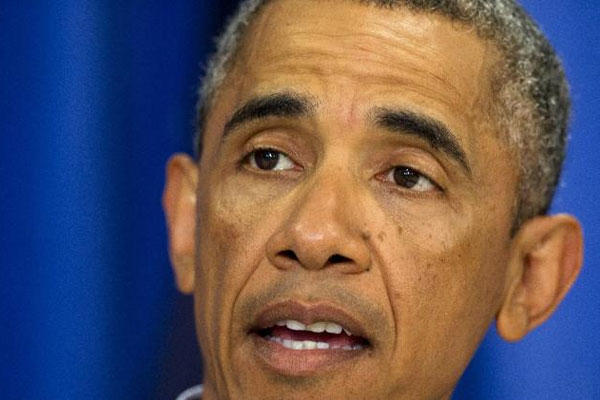The MV-22 Ospreys and most of the 129 troops rushed to the Kurdish region of northern Iraq for a possible rescue mission will be withdrawn quickly following the lifting of the siege of Mount Sinjar, President Obama said Thursday.
"The situation on the mountain has greatly improved and Americans should be very proud of our efforts" against the Islamic State of Iraq and the Levant, Obama said from Martha's Vineyard, where he is vacationing.
"We broke the ISIL siege of Mount Sinjar" with a series of airstrikes and airdrops of relief supplies to members of the Yazidi sect trapped on the 4,600-foot peak, Obama said.
"We helped vulnerable people reach safety, and we helped save many innocent lives," said Obama, who has been under fire for his response to the rise of ISIL in Syria and Iraq.
On Tuesday, about 129 soldiers and Marines arrived in the Kurdish region aboard four Marine MV-22 Ospreys and several Army helicopters to assess the situation and possibly attempt a rescue of the Yazidis.
However, a 20-member U.S. team that went to Mount Sinjar Wednesday found that most of the Yazidis had left the mountain range on foot to safety with Kurdish forces known as the peshmerga.
Obama said the "majority of the military personnel who conducted the assessment will be leaving Iraq in the coming days."
At a later Pentagon briefing, Rear Adm. John Kirby, the Pentagon press secretary, said that a small number of the 129 troops would likely stay in the Kurdish capital of Irbil to assist in a Joint Operations Center set up there to advise and assist the Kurdish forces.
The withdrawal of most of the 129 would leave about 850 U.S. military personnel in Iraq, with the vast majority in Baghdad.
Kirby said that U.S. airstrikes on ISIL targets around Mount Sinjar were a main factor in the escape of the Yazidis.
"We certainly put a hurting on them," Kirby said of the ISIL fighters.
Although the U.S. team found far fewer Yazidis on the mountain than expected, "we believe the risk of genocide was real," Kirby said.
Despite the lifting of the Mount Sinjar siege, the United Nations warned of the crisis for hundreds of thousands of refugees displaced by the ISIL advances in western and northern Iraq.
The UN announced that it was declaring a Level 3 Emergency, its highest for a humanitarian crisis, to aid in the mobilization of resources for the refugees.
The UN Refugee Agency (UNHCR) said that the Dohuk Governorate near the Turkish border was now hosting nearly 400,000 Iraqis who fled from ISIL, including Yazidis, Christians, Shabak, Kakai, Armenian and Turkmen minorities. The UN has a long-standing Level 3 Emergency status for neighboring Syria.
Although the threat of mass violence in the Kurdish region appeared to have eased, "we're going to keep our eye on it," Kirby said.
The U.S. will also continue with airstrikes to protect U.S. personnel and facilities in Baghdad and Irbil, Kirby said.
-- Richard Sisk can be reached at richard.sisk@monster.com


























